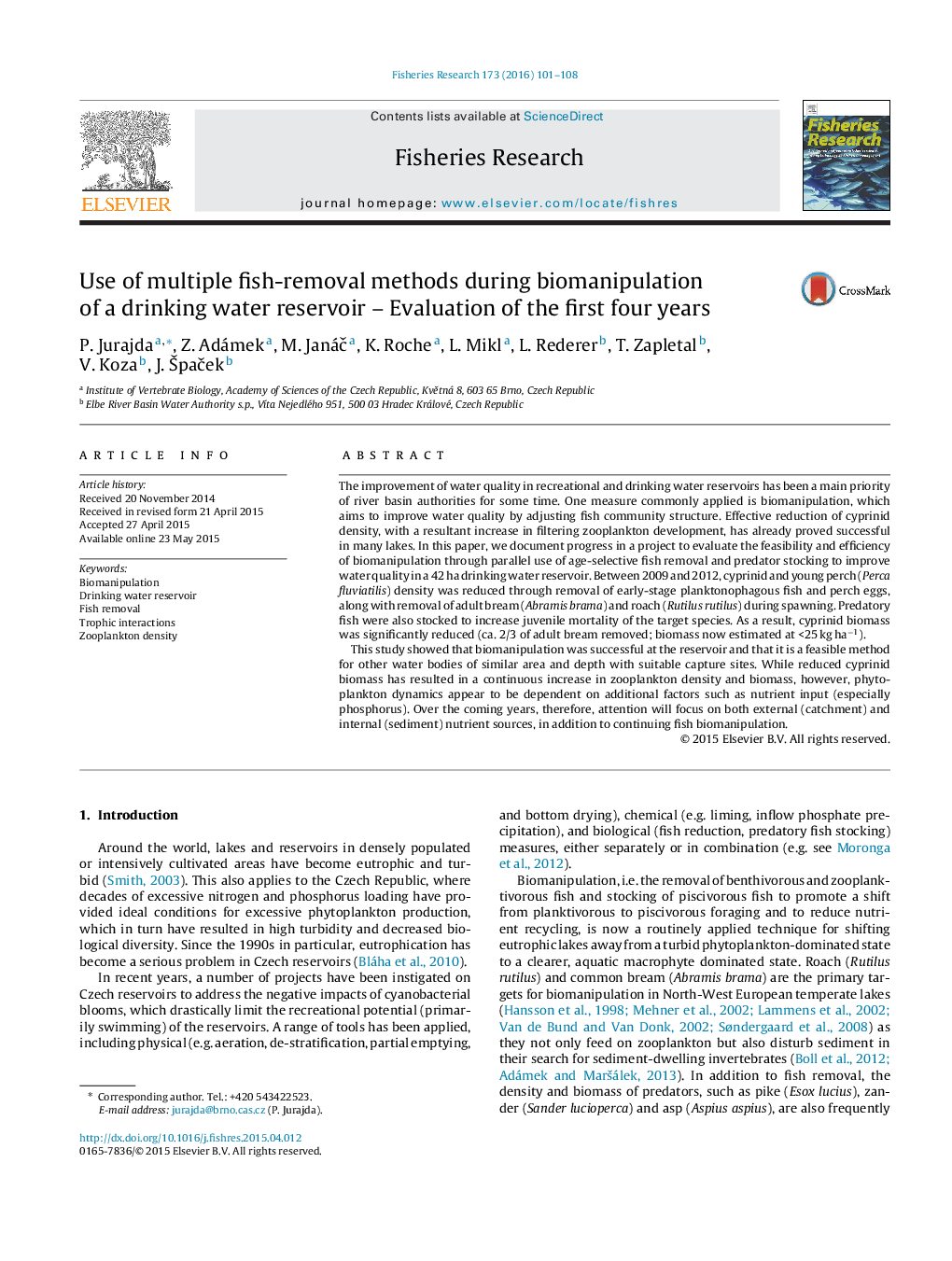| کد مقاله | کد نشریه | سال انتشار | مقاله انگلیسی | نسخه تمام متن |
|---|---|---|---|---|
| 4542817 | 1327106 | 2016 | 8 صفحه PDF | دانلود رایگان |

• We report on biomanipulation in a stratified drinking water reservoir.
• Larvae, egg and spawning fish removal was efficient at reducing bream, roach and perch populations.
• Biomanipulation measures led to increased zooplankton, but no immediate drop in phytoplankton.
• Stocking with preferred game fish (e.g. pike) led to an increase in illegal angling.
• Bottom-up processes (nutrient cycling) tend to dominate in reservoir biomanipulation.
The improvement of water quality in recreational and drinking water reservoirs has been a main priority of river basin authorities for some time. One measure commonly applied is biomanipulation, which aims to improve water quality by adjusting fish community structure. Effective reduction of cyprinid density, with a resultant increase in filtering zooplankton development, has already proved successful in many lakes. In this paper, we document progress in a project to evaluate the feasibility and efficiency of biomanipulation through parallel use of age-selective fish removal and predator stocking to improve water quality in a 42 ha drinking water reservoir. Between 2009 and 2012, cyprinid and young perch (Perca fluviatilis) density was reduced through removal of early-stage planktonophagous fish and perch eggs, along with removal of adult bream (Abramis brama) and roach (Rutilus rutilus) during spawning. Predatory fish were also stocked to increase juvenile mortality of the target species. As a result, cyprinid biomass was significantly reduced (ca. 2/3 of adult bream removed; biomass now estimated at <25 kg ha−1).This study showed that biomanipulation was successful at the reservoir and that it is a feasible method for other water bodies of similar area and depth with suitable capture sites. While reduced cyprinid biomass has resulted in a continuous increase in zooplankton density and biomass, however, phytoplankton dynamics appear to be dependent on additional factors such as nutrient input (especially phosphorus). Over the coming years, therefore, attention will focus on both external (catchment) and internal (sediment) nutrient sources, in addition to continuing fish biomanipulation.
Journal: Fisheries Research - Volume 173, Part 1, January 2016, Pages 101–108